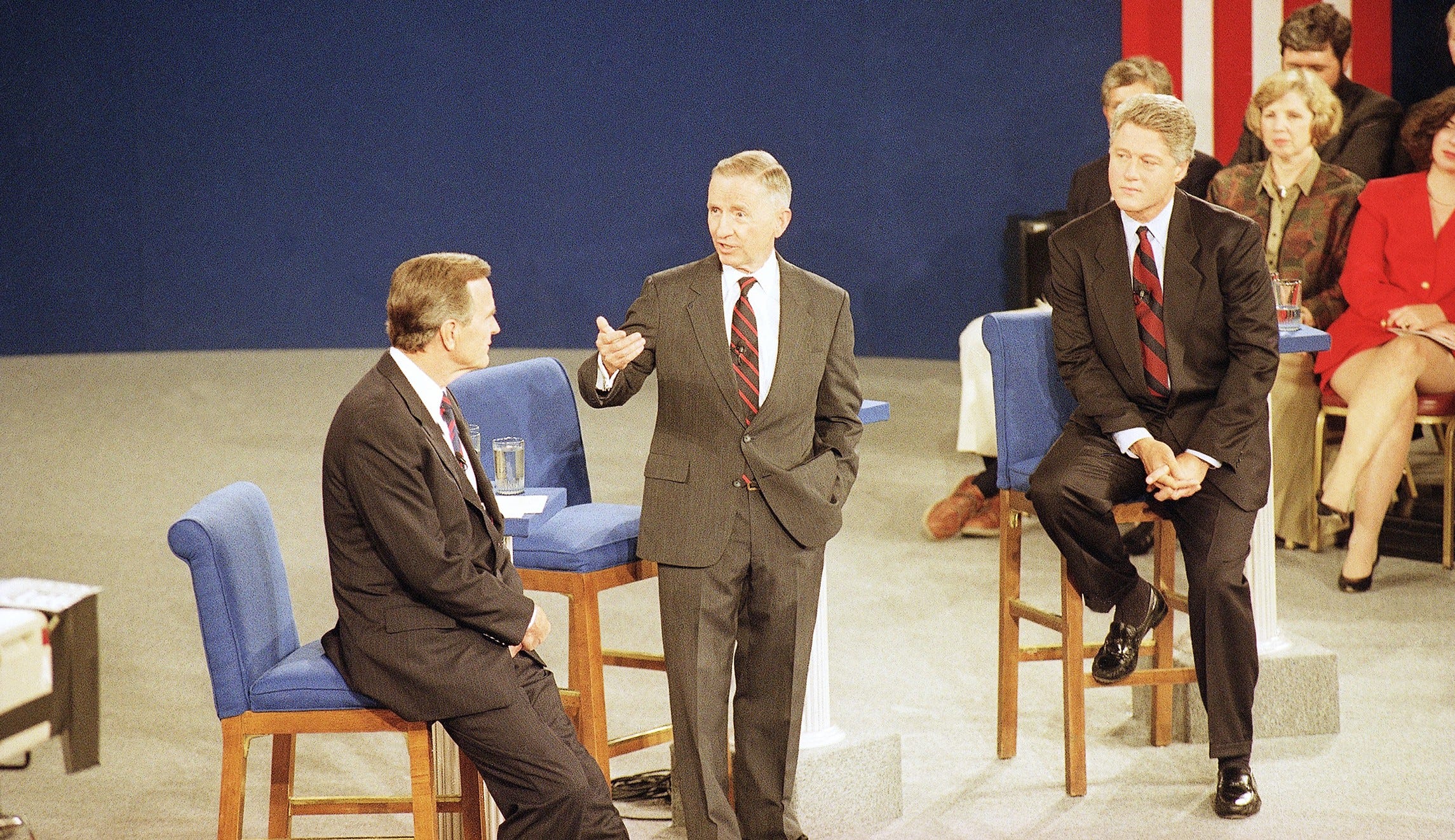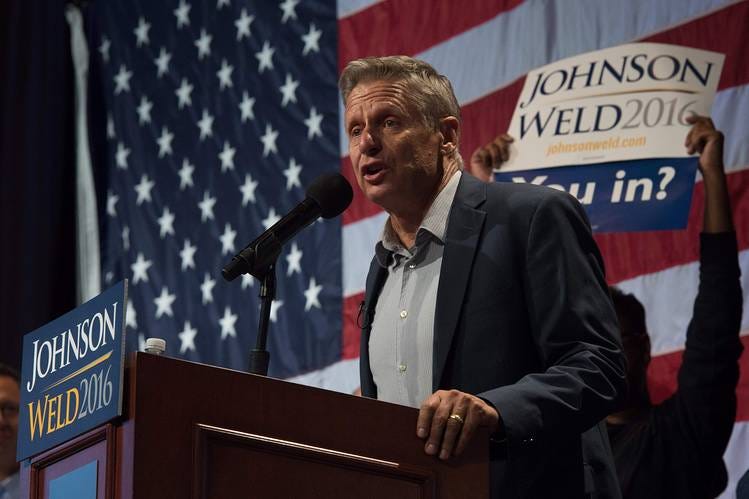Did you get a chance to read the first blog in our series? If not, click here to start!
Perhaps the most enduring controversy for the Commission on Presidential Debates (CPD) has been its commitment to excluding candidates not running with either the Republican or Democratic parties. This stems from the 1992 presidential election, the second round of debates the CPD oversaw. In that election cycle, Texas billionaire Ross Perot decided to run for president as an independent, challenging incumbent President Bush and his Democratic opponent, Bill Clinton.
Perot, with the ability to pump millions of dollars into ballot access and advertising, was able to launch a highly effective campaign that saw him surpass both Bush and Clinton in polls by June 1992. But a month later, Perot decided to drop out of the race over concerns his candidacy might result in no candidate reaching the 270 vote threshold in the electoral college. A proponent of direct democracy, Perot did not want to risk leaving the presidential election in the hands of the House of Representatives.

Something changed in the next four months, as Perot jumped back into the race on October 1, 1998 and started spending even more on advertising than he had before. His already high profile and the confusing nature of his campaign led to his inclusion in the CPD’s debates. Perot ended up performing very well in each debate, and while his temporary suspension of his campaign had erased his lead in the race, Perot still earned just shy of 20 million votes, a record for third party and independent candidates everywhere.
Perot launched another presidential bid in 1996, this time with the Reform Party. The thought was that Perot could recapture the magic that once had him leading the polls in 1992, and he could potentially win the electoral college this time around. While Perot started to gain traction once again, his campaign was dealt a serious blow when the CPD arbitrarily voted to exclude him from their debates, explaining that “only President Clinton and Senator Dole have a realistic chance, as set forth in our criteria, to be elected the next president of the United States.”
Without the national exposure from the debates, where tens of millions of Americans tune in, Perot’s campaign was effectively dead in the water. His polls decreased afterward, and he finished with just over 8 million votes, less than half what he had received in 1992.
Not surprisingly, lawsuits were filed against the CPD over their exclusion of Perot, with the flimsy criteria of “realistic chance to win” coming under heavy scrutiny. As a result, the CPD created a hard criteria for future debate inclusion: only candidates who reach an average of 15% across five polls selected by the CPD are eligible to participate in the debate.
The catch? They don’t include third party candidates in their polls to determine who can participate!
No presidential candidate outside of the Republican and Democratic parties has qualified under this criteria since then.
The closest anyone has come to hitting that threshold was Libertarian Gary Johnson in 2016. As a former governor of New Mexico, and running alongside former Massachusetts Governor Bill Weld, Johnson gained more media attention than any other third party candidate since Perot, and as such he polled well. By July of 2016, Johnson polled as high as 13% in one national poll, and was routinely between 10–15% in individual states.

However, Johnson was ultimately excluded from the debates after the CPD announced his low polling results in the five polls they had selected. Of those five polls the CPD considered, one was from an outlet that hadn’t conducted a new poll in over a month, while another poll discarded results from independent voters (Johnson polled highest among independents) and a third poll discarded results from millennial voters, the age group Johnson polled highest with.
As with Perot in 1996, Johnson’s support dried up after being excluded from the debates, and he finished with just under 4.5 million votes. While that broke records in the Libertarian Party, it was a stark disappointment for a campaign that once had so much momentum. And the exclusion from the debates at the hands of the CPD was the straw that broke the camel’s back.
In a few months, the CPD will officially send out their invites for 2020’s series of debates based on who meets their criteria, but we all know who it will be: Trump, Biden, and nobody else. The CPD designed it this way, and that’s not a surprise considering they were literally created and run by the Republican and Democratic establishments.
Meanwhile, Johnson’s successor in the Libertarian Party is Dr. Jo Jorgensen, the only female candidate for president this time around. She will surely be left out by the CPD, but with this year marking the centennial celebration of women gaining the right to vote, you have to wonder if things might be different if the League of Women Voters still ran the show…?
Stay tuned for more to come as People for Liberty will be focusing on #VoterSuppression and the fight to empower women in politics this month as we build towards our Women’s Suffrage Centennial Celebration on August 26, 2020. We kicked off the month with a BANG this last weekend as the #LetHerSpeak Peaceful Protest Car Convoy rolled into 150+ counties across all 50 states and Washington DC… but we’re not stopping there!
